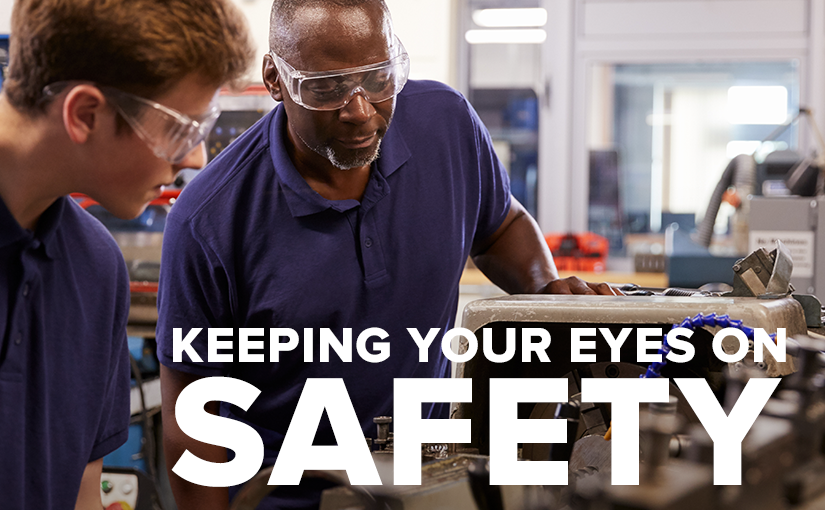The Centers for Disease Control (CDC) reports that about 2,000 workers in the US sustain a work-related eye injury that requires medical attention each day. Prevent Blindness America and many other professional organizations maintain that 90% of these accidents could be prevented. As an employer, you are responsible for providing the proper personal protective equipment (PPE) for every person working under your supervision. You can do your part to prevent these injuries from happening by understanding when eye protection should be worn and what type of protection should be used for different tasks.
When to Wear
OSHA requires workers to wear eye protection when “exposed to eye or face hazards from flying particles, molten metal, liquid chemicals, acids or caustic liquids, chemical gases or vapors, or potentially injurious light radiation.” If there is even a remote chance that an employee could be struck by an object, exposed to toxic fumes, or ultra-bright light, (like from a welding arc), they are required to protect their eyes to avoid eye injury.
Even with this defined list, however, eye injuries are still occurring in US workplaces at alarming rates. There are many factors that lead to the 20,000 workplace eye injuries reported each year, including workers wearing old, worn out gear, wearing equipment improperly, and even not wearing any protection at all.
What to Wear
There are three main variables when deciding what eye protection is best for a task: lens color, lens thickness, and type of frame.
- Lens Color – The lens color used with eye protection should be largely dependent upon the lighting condition. Generally, clear lenses will provide the proper protection. However, when working outdoors, in low-lit areas, or on welding tasks, different colored, coated, and filtering lenses are recommended. To learn more, read our blog dedicated specifically to colored lenses and their applications.
- Lens Thickness – Some jobs have an increased risk for high-impact hazards. Machinists, millwrights, carpenters, plumbers, and pipe fitters are all positions that should have more than just basic impact protection. High-impact lenses may still require the use of additional protective measures like side or face shields.
- Type of Frame – While mostly interchangeable, there are some differences that should be considered when choosing what protection to provide workers. Goggles are more prone to fogging up than glasses due to their sealing fit around the eyes, and may require frequent removal to clean the lens. Glasses may not fog as easily, but they leave the wearer open to splash contamination and should be worn with side shields when impact hazards are present.
Eye Protection from the Pros
As an employer, it is your responsibility to create a culture of safety and ensure that all your employees are properly wearing the protection that you’ve provided them. Take the time to train your employees about what tasks in your workplace require which kinds of safety gear. Additionally, when a worker reports that their safety equipment, including eye protection, is worn out, it is your duty to replace the old equipment.
US Standard Products has a wide selection of top quality protective eyewear that provides safer and smarter eye protection. Start exploring your options by downloading our free catalogue or calling 1-844-877-1700 today.
To stay up-to-date on the latest workplace safety news and trends, follow US Standard Products on social media:

